Uterine fibroids is one of the most common benign tumors that women suffer, in this article you will learn a little more about fibroid, how they are evaluated through ultrasound, and how you can naturally deal with the symptoms or even prevent them.
Uterine fibroids are noncancerous growths (meaning benign) of the uterus that often appear during childbearing years. Also known as leiomyomas or myomas, uterine fibroids aren’t associated with an increased risk of uterine cancer and almost never develop into cancer.
Fibroids range in size from very small, almost undetectable by the human eye, to bulky large masses that can distort and enlarge the uterus. You can have a single fibroid or multiple ones.
Many women have uterine fibroids sometime during their lives. But you might not know you have uterine fibroids because they often cause no symptoms. Your doctor may discover fibroids incidentally during a pelvic exam or ultrasound.
Uterine Fibroids: Clinical information.
- Fibroids are the most common Benign uterine abnormality encounter in women these days.
- Women often experience menstrual problems such as abnormal periods and/or painful periods.
- Depending on the location fibroids can cause pressure on the pelvis and the bladder causing urinary frequency.
- Depending on the location they may cause infertility as well.
Uterine Fibroids histology:
- Fibroids are composed of smooth muscles and connective tissue.
- They may contain calcifications.
- During pregnancy, fibroids might grow rapidly due to increased blood flow on the uterus.
- A rapid fibroid growth might lead to infarction and degeneration causing significant pain.
Other posts that might be helpful to you!
How to boost your fertility to get pregnant fast.
Uterine fibroids are classified by the location.
- Subserous Fibroids: Subserosal uterine fibroids develop on the outer surface of the uterus and continue to grow outwards, when they are large in size they produce discomfort and pain in the surrounding organs.
- Pedunculated or Exophytic Fibroids: This is the type of fibroid that is located entirely outside the uterus. They must be connected to the uterus by a stalk-like growth called peduncle.
- Intramural Fibroids: Those fibroids are predominantly located within the Myometrium ( uterine muscle ). They rarely lead to significant clinical problems unless they are large than 5 cm.
- Submucosal Fibroids: These are the most clinically important fibroids, which account for only 5% of all uterine fibroids. This type of fibroids are located within the cavity of the uterus known as endometrium. Small and Medium Submucosal fibroids cause classic symptoms like Abnormal and Painful periods and more importantly, these are the fibroids that can cause Infertility. Submucosal fibroids can be removed from the cavity with a Procedure called Hysteroscopy.
Sharing is caring!
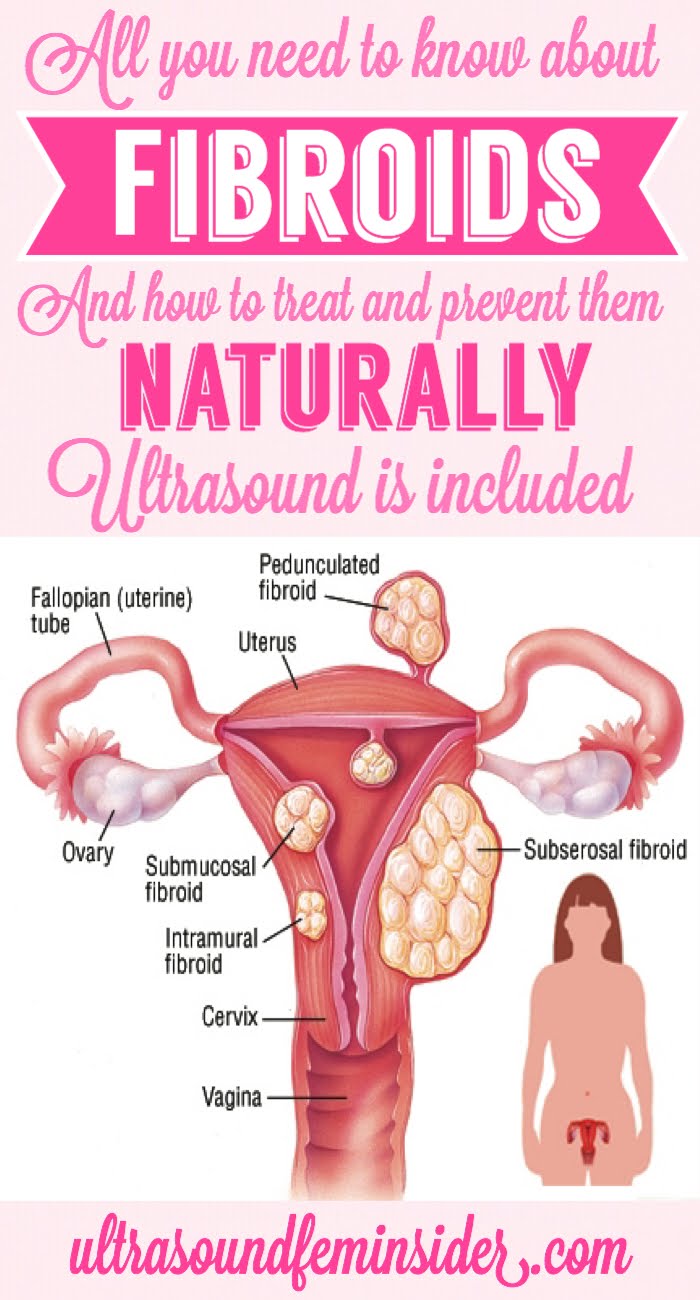
Classification System used by hysteroscopic surgeons for Submucous fibroids, based on the location.
Type 0. Located entirely within the cavity.
Type 1. Mostly within the cavity, more than 50% of fibroid is inside the endometrial cavity.
Type 2. Mostly outside the cavity, more than 50% of fibroid located outside the cavity within the myometrium.
Type 2 of submucosal fibroids are NOT considered for hysteroscopy resection.
If the Fibroids cannot be Removed with a Hysteroscopy then the recommended procedure will be a Myomectomy
Ultrasound images of fibroids.
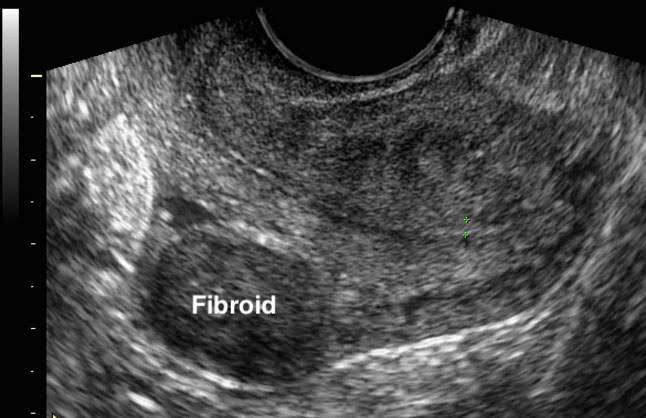
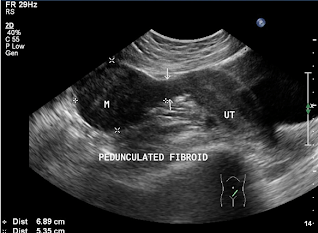
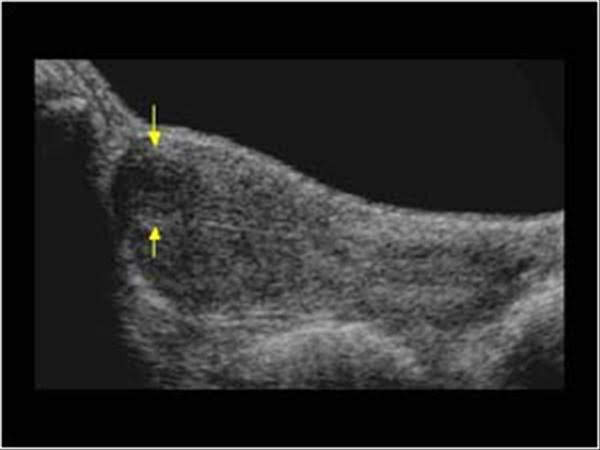
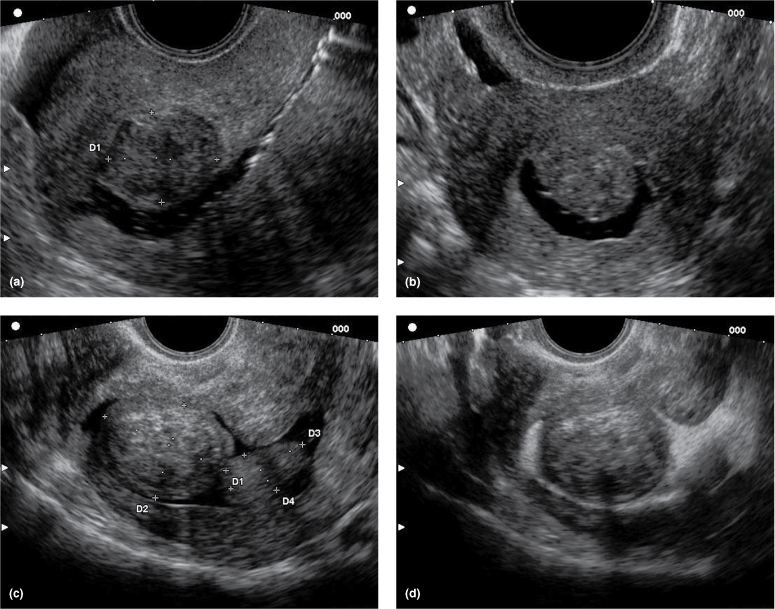
Natural remedies and lifestyle changes to prevent or cure uterine fibroids.
Some risk factors for fibroids are out of your control, but there are many others you can manage. These includes things like eating higher-quality meat (especially beef), adding more detoxifying foods such as leafy green vegetables into your diet, and drinking less alcohol and/or caffeine. There are also a lot of steps you can take to help balance your hormones naturally, which is a key part of prevention and natural fibroid treatment.
Please know that after Menopause fibroids will disappear on their own due to decreased hormones.
What foods you need to avoid if you suffer of fibroids?
- High-Fat, Processed Meats.
- Non-organic dairy.
- Refined Sugar.
- Refined Carbohydrates.
- Excessive consumption of Alcohol and caffeine.
What foods you should include in your diet if you have fibroids?
- Eating mostly organic foods.
- Green Leafy Vegetables: due to its anti-inflammatory effects.
Cruciferous vegetables: This vegetables support detoxification of your liver and may help balance estrogen levels. Some studies has shown that high consumption of broccoli, cabbage, tomato and apple seems to be a protective factor for uterine fibroids, potentially due to their high antioxidant and fiber content.
Beta Carotene-Rich Foods: Vitamin A promotes the growth and repair of healthy tissues, which can be very helpful for treating fibroids.
High-Iron Foods: To replace the excessive loss of iron due to increased bleeding, include high-iron foods like grass-fed beef and legumes in your diet.
Flaxseeds: Can help balance estrogen levels in the body, which can HELP to shrink fibroids in some cases.
Whole Grains: Instead of eating refined grains, opt for healthier whole grains like millet, spelt, brown rice, buckwheat, rye and oats. These are higher in fiber.
How to balance naturally your hormones to get rid of fibroids.
Avoid Exposure to Environmental Toxins:
Stay clear of the following chemicals to improve your hormonal health, as well as your general health: pesticides, herbicides, synthetic fertilizers, bleach, food preservatives, harmful cleaners (even certain eco-cleaners) and food dyes. You’ll also want to opt for natural, unbleached feminine care products as well as organic body care products and makeup.
Exercise
Getting regular exercise can actually help to prevent fibroids before they even start! According to one study, the more a woman exercises, the less likely she is to get uterine fibroids. Exercise has many anti-inflammatory effects, may help control blood pressure, can help improve insulin sensitivity, is beneficial for weight management, and may contribute to hormonal balance.
Well this resumes the most important aspects of fibroids, on my next post I will be talking about Abnormalities of the endometrium ( cavity), thanks for visiting my blog today, I hope this post was helpful to you.
Zadi, xo
Disclaimer: Due to HIPPA compliance and regulations all patient information is protected on this site. Also the information provided on my blog is designed to provide helpful information about the topic and are made with the best of my knowledge therefore is not intended to diagnose or treat any medical condition, For diagnosis or treatments on any medical problems consult your own physician. The author is not responsible or liable for any mistreated pathologies or wrong treatments.










Once I gain weight, my stomach grows and I even feel pain on my sideways. I can not even sleep on my stomach then. But if I eat green vegetables and use teas that balance hormones things changes.I was told that I have a challenge of fibroids in 2012
Hi dear, in cases of mild to moderate fibroids, improving nutrition and lifestyle can make a huge impact in your overall health. In severe cases of fibroids, meaning that you have lot of fibroids or they Are extremely big only surgery will resolve the problem. You can try homeopathic treatments in the meantime but is always recommended to visit the doctor.
[…] Uterine Fibroids, how to naturally treat and prevent them. […]
[…] Uterine Fibroids, how to naturally treat and prevent them. […]
Hey there! I’m at work surfing around your blog from my new iphone 4! Just wanted to say I love reading through your blog and look forward to all your posts! Carry on the excellent work!
[…] to be addressed first in order to get long lasting relief. If the reason of the dysmenorrhea are fibroids, endometriosis, adenomyosis or any other medical condition then all these remedies will help […]